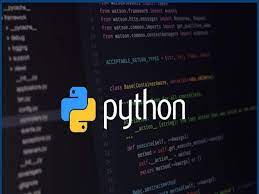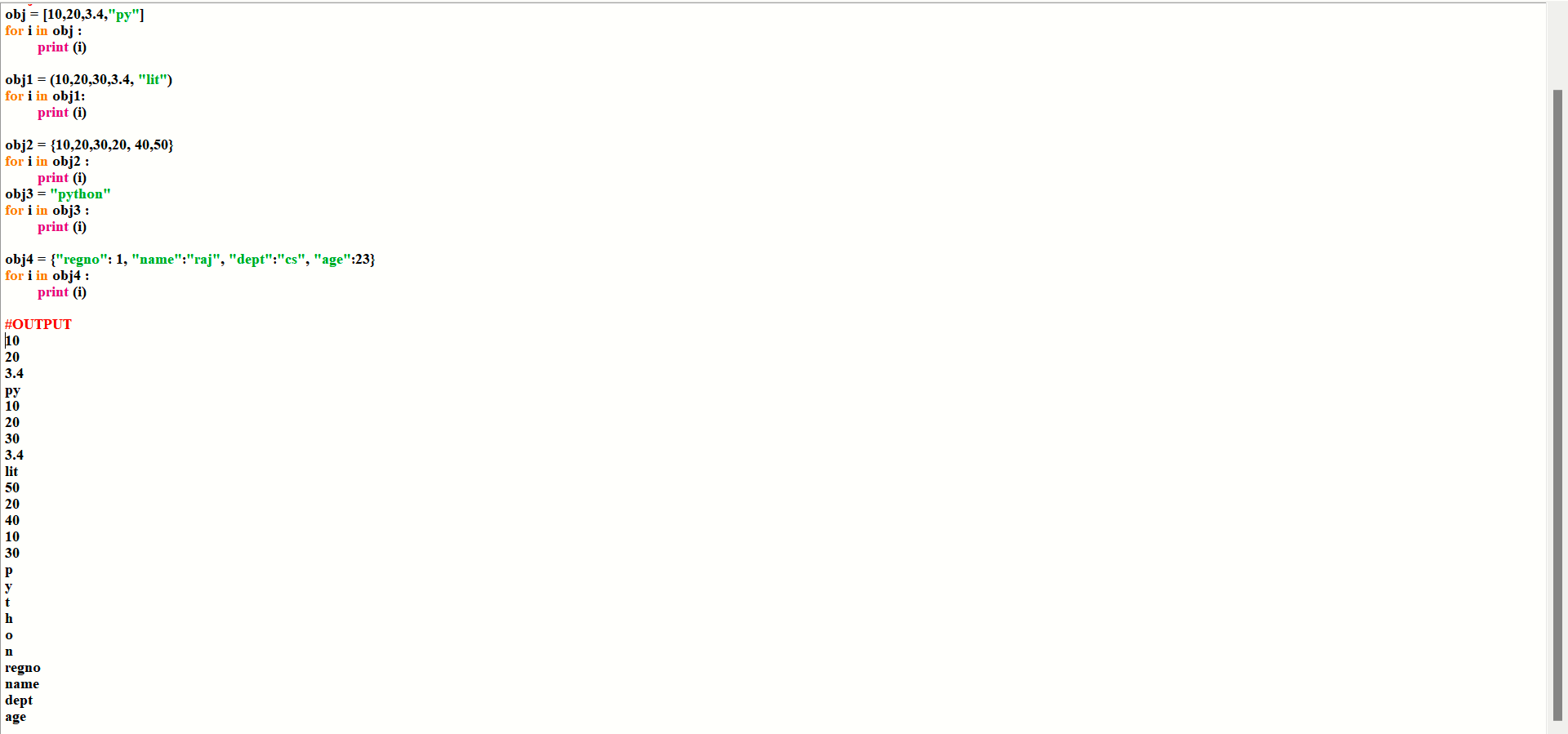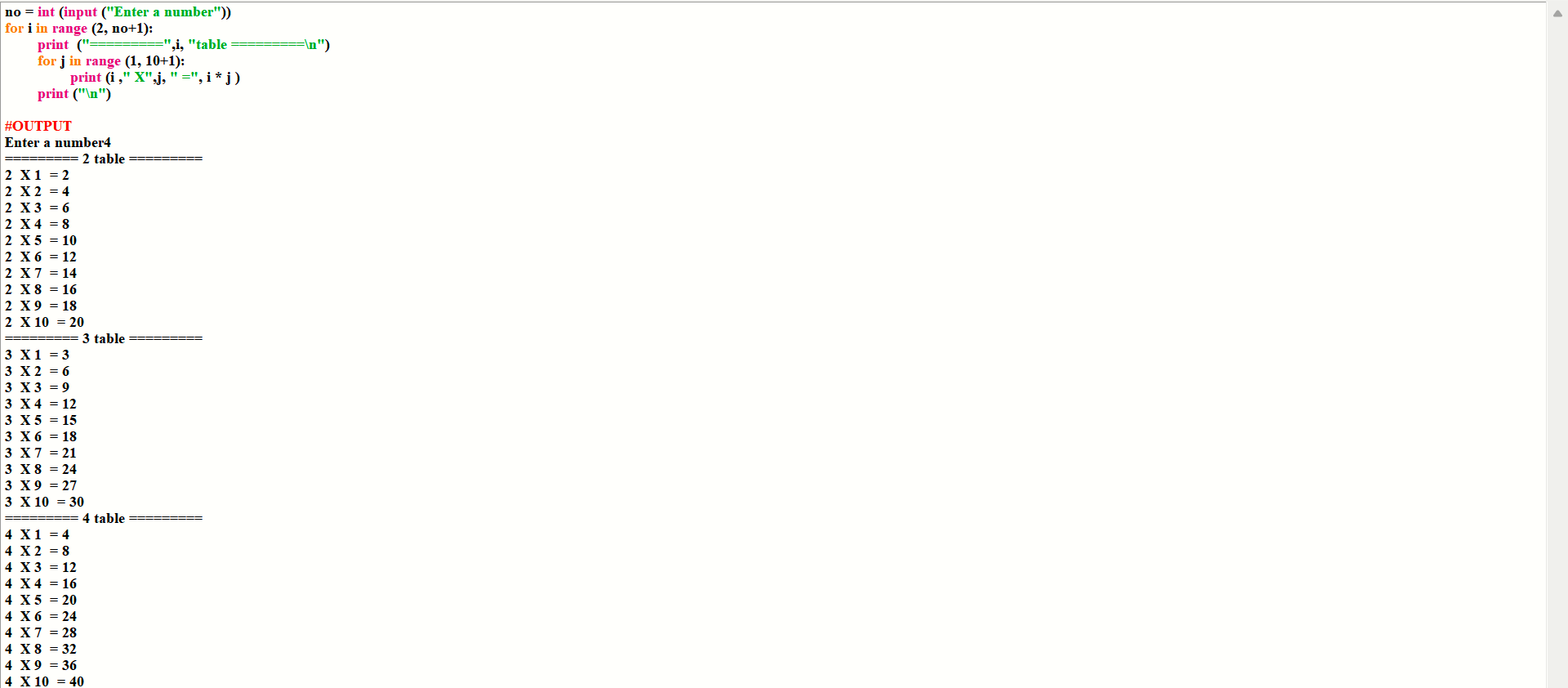Day 14: Mastering For Loop Control Statements in Python
 Archana Prusty
Archana PrustyTable of contents
- Introduction :
- Control Statement :
- FOR LOOP
- RANGE CLASS / RANGE DATA TYPE / RANGE DATA STRUCTURE.
- ex : #Display all number from 0 to 10
- #Display all number from 5 to 20
- #Display all number from 1 to 20 like 1 3 5 7 9....
- #wap to display all number between 2 to 200 , from that range make list which number are divided by 3 4 but not 6 with 5, from that find max number , min number & sum of all number & count to number
- #WAP to take a number as user input from that number find unique number
- #WAP to take a number as user input from starting as ‘2’ to that random number, get the numeric table
- #Wap to display sum of all number between a range , from that range find factorial of all numbers
- Challenges :
- Resources :
- Goals for Tomorrow :
- Conclusion :
- Connect with me :
- Join the conversation :

Introduction :
Welcome back to my Python journey! Yesterday, I laid the foundation with control structures in python.
Today, I dove into control statements, essential building blocks of any programming language. Let's explore what I learned!
Control Statement :
FOR LOOP
c / c++ / java
for ( INITIALIZATION ; CONDITION ; UPDATION )
{
BODY
}
In PYTHON :
() -> :
{} -> INDENTATION
syntax to implement for loop in python :
for x in y :
body

#obj = 10
#obj =2.3
#obj = 4+8j
#obj = True
#obj = None obj = [10,20,3.4,"py"]
for i in obj :
print (i)
obj1 = (10,20,30,3.4, "lit")
for i in obj1:
print (i)
obj2 = {10,20,30,20, 40,50}
for i in obj2 :
print (i)
obj3 = "python"
for i in obj3 :
print (i)
obj4 = {"regno": 1, "name":"raj", "dept":"cs", "age":23}
for i in obj4 :
print (i)

RANGE CLASS / RANGE DATA TYPE / RANGE DATA STRUCTURE.
range is a predefined class in python.
. to get the mannuel of range class,
\>>> help ( range )
. we can create the object of range class,
obj = range ( stop ) start = 0 step = 1
obj = range ( start, stop ) step = 1
obj = range ( start, stop, step )
. start will be included but stop will not be included
. start , stop , step param must be int type object.
. range class is used to create a collection of int type object only.
. to get the values of range object we have to implement type conversion
rangeObj = range ( 1, 11, 2 )
print ( list ( rangeObj ) )
. range object supports index mechanism
. +ve index and -ve index is supported with range object.
rangeObj [ index ]
. range is a subscriptable object.
. range is an immutable object.
. range object does not support item assignment or item deletion.
. range object is hashable type object.
ex : #Display all number from 0 to 10
for i in range (10+1):
print (i)
#Display all number from 5 to 20
for i in range (5,20+1):
print (i)
#Display all number from 1 to 20 like 1 3 5 7 9....
for i in range (1,20+1, 2):
print (i)
#wap to display all number between 2 to 200 , from that range make list which number are divided by 3 4 but not 6 with 5, from that find max number , min number & sum of all number & count to number
l =[]
for i in range (2, 200+1):
print (i, end = " ")
if i % 3 == 0 and i % 4 == 0 and i % 5 != 0:
l.append (i)
print ("\n", l, "\n", "max element=", max (l), "\n", "min element=", min (l),"\n", "sum of all element=", sum (l),"\n", "total count =", len (l))

#WAP to take a number as user input from that number find unique number
l =[]
no = int (input ("Enter a number"))
word = str (no)
for i in word :
l.append (i)
print (set(l))

#WAP to take a number as user input from starting as ‘2’ to that random number, get the numeric table
no = int (input ("Enter a number"))
for i in range (2, no+1):
print ("=========",i, "table =========\n")
for j in range (1, 10+1):
print (i ," X",j, " =", i * j )
print ("\n")

#Wap to display sum of all number between a range , from that range find factorial of all numbers
start = int (input ("Enter start value "))
stop = int (input ("Enter stop value "))
sum = 0
for i in range (start, stop+1 ) :
sum = sum + i
res = 1
print (i,"factorial=")
for j in range (1 , i+1) :
res = res * j
print (res)
print ("sum of all number =", sum)

Challenges :
Understanding loop iteration.
Handling errors.
Resources :
Official Python Documentation: Control Structures
W3Schools' Python Tutorial: Control structures
Scaler's Python Course: Control Flow
Goals for Tomorrow :
Explore something more on command_line arguments.
Conclusion :
Day 14’s a success!
What are your favorite Python resources? Share in the comments below.
Connect with me :
GitHub: [ https://github.com/p-archana1 ]
LinkedIn : [ https://www.linkedin.com/in/archana-prusty-4aa0b827a/ ]
Join the conversation :
Share your own learning experiences or ask questions in the comments.
HAPPY LEARNING!!
THANK YOU!!
Subscribe to my newsletter
Read articles from Archana Prusty directly inside your inbox. Subscribe to the newsletter, and don't miss out.
Written by

Archana Prusty
Archana Prusty
I'm Archana, pursuing Graduation in Information technology and Management. I'm a fresher with expertise in Python programming. I'm excited to apply my skills in AI/ML learning , Python, Java and web development. Looking forward to collaborating and learning from industry experts.